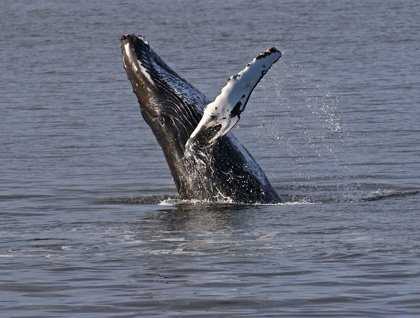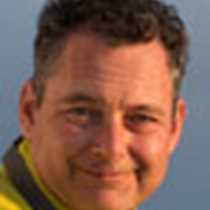Twelve hours after departing Sitka, the expedition leader’s morning wake-up call was a bit early, because a humpback whale was breaching near the ship! The whale raised its tail flukes, dove, and seconds later burst out of the water, landing with a huge splash. This sequence was repeated again…and again…and again. The setting was beautiful: tall, jagged mountains, spruce-covered hills touching the shore, and a cascading waterfall. But the boisterous young whale kept our attention. It was an absolutely wonderful beginning to our voyage.
During breakfast we cruised a short distance north and soon found five humpback whales feeding next to shore. They dove in quick succession, and within minutes bubbles appeared on the water in a large ring. The whales erupted through it with mouths open wide. When they dove again, we lowered a hydrophone and heard the eerie, undulating feeding call made by one of the whales. Fish react to the sound by schooling more tightly, and the whales can catch more of them. Just a few dozen humpbacks feed cooperatively using bubblenets in Southeast Alaska, so it was very exciting to see.
For the remainder of the day we explored Kelp Bay on the east side of Baranof Island. At the end of Kelp Bay’s middle arm, we walked in sunny, summerlike conditions through a huge meadow. We discovered many signs of animals that live in the area: bear scat, deer tracks, and even deer antlers were hidden in the tall beach rye grass and among yellow, red, and white wildflowers. We followed animal trails, and found that brown bears had been digging to get at plant roots. Among the spruce trees the air was cool under their moss-draped branches. We walked across shallow, wide streams.
The ship moved to another arm of Kelp Bay, and we spent the late afternoon paddling kayaks and cruising in expedition landing craft. Harbor seals rested on low, algae-covered islets. Off in the distance another humpback whale breached. This evening we are heading north in Chatham Strait.









